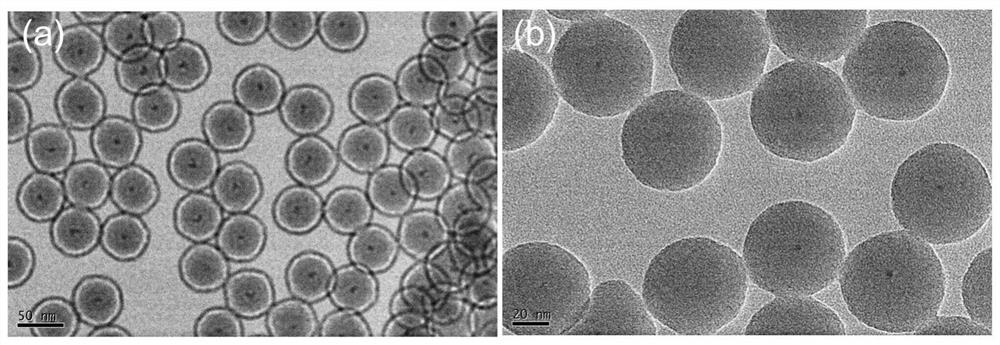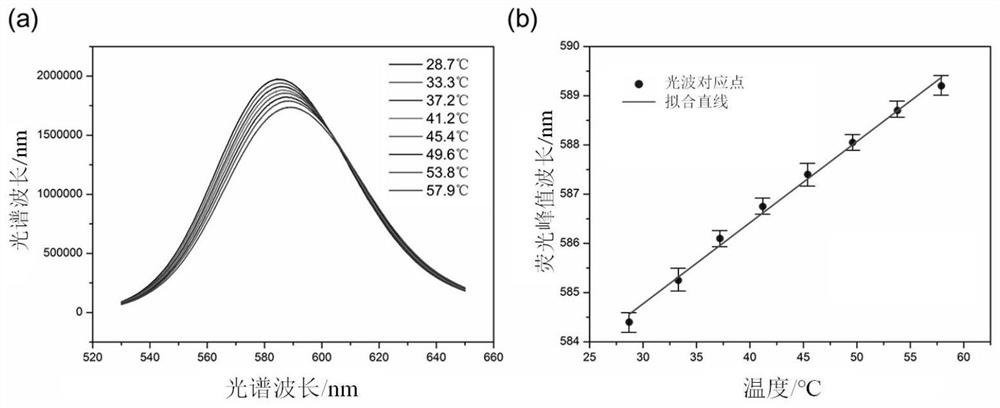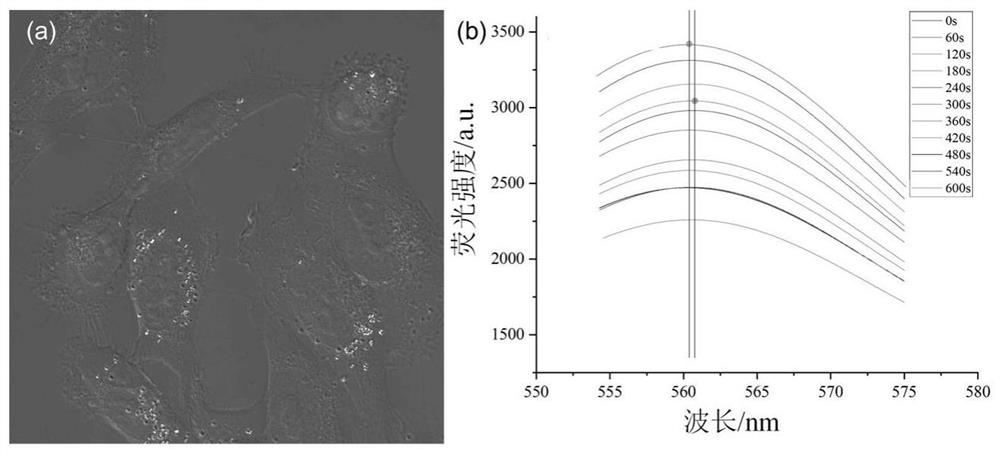Method for measuring temperature change of organelle
A technology of temperature change and measurement method, which is applied in the field of measurement of cell organelle temperature change, can solve problems such as the failure to realize the characterization of cell organelle temperature, and achieve the effects of easy mastery of the process, simple experimental equipment, and simple preparation of raw materials
- Summary
- Abstract
- Description
- Claims
- Application Information
AI Technical Summary
Problems solved by technology
Method used
Image
Examples
Embodiment 1
[0021] Embodiment 1, a method for measuring the temperature change of organelles, comprising the following steps:
[0022] The first step is to prepare a temperature-sensitive water-soluble CdTe / CdS / ZnS quantum dot solution, and prepare a CdTe / CdS / ZnS quantum dot solution located in the visible light emission by layer-by-layer coating by the aqueous phase method;
[0023] In the second step, use the reverse microemulsion method to coat the thermosensitive water-soluble CdTe / CdS / ZnS quantum dot solution prepared in the first step with silica: 7.5mL of cyclohexane, 1.77mL of triton 100 and 1.8 mL of n-hexanol were mixed, and 200 μL of the temperature-sensitive water-soluble CdTe / CdS / ZnS quantum dot solution prepared in the first step was added to the mixed solution, followed by 240 μL of 25 wt% ammonia water and stirred at a medium speed After a period of time, 100 μL of tetraethyl orthosilicate was finally added to the above solution. At this point, the reaction flask was place...
Embodiment 2
[0028] Embodiment 2, a method for measuring the temperature change of organelles, comprising the following steps:
[0029] The first step is to prepare a temperature-sensitive water-soluble CdTe / CdS / ZnS quantum dot solution, and prepare a CdTe / CdS / ZnS quantum dot solution located in the visible light emission by layer-by-layer coating by the aqueous phase method;
[0030] In the second step, use the reverse microemulsion method to coat the thermosensitive water-soluble CdTe / CdS / ZnS quantum dot solution prepared in the first step with silica: 7.5mL of cyclohexane, 1.77mL of triton 100 and 1.8 mL of n-hexanol were mixed, and 200 μL of the temperature-sensitive water-soluble CdTe / CdS / ZnS quantum dot solution prepared in the first step was added to the mixed solution, followed by 240 μL of 25 wt% ammonia water and stirred at a medium speed After a period of time, 100 μL of tetraethyl orthosilicate was finally added to the above solution. At this point, the reaction flask was place...
Embodiment 3
[0036] Embodiment 3, a method for measuring the temperature change of organelles, comprising the following steps:
[0037] The first step is to prepare a temperature-sensitive water-soluble CdTe / CdS / ZnS quantum dot solution, and prepare a CdTe / CdS / ZnS quantum dot solution located in the visible light emission by layer-by-layer coating by the aqueous phase method;
[0038] In the second step, use the reverse microemulsion method to coat the thermosensitive water-soluble CdTe / CdS / ZnS quantum dot solution prepared in the first step with silica: 7.5mL of cyclohexane, 1.77mL of triton 100 and 1.8 mL of n-hexanol were mixed, and 200 μL of the temperature-sensitive water-soluble CdTe / CdS / ZnS quantum dot solution prepared in the first step was added to the mixed solution, followed by 240 μL of 25 wt% ammonia water and stirred at a medium speed After a period of time, 100 μL of tetraethyl orthosilicate was finally added to the above solution. At this point, the reaction flask was place...
PUM
 Login to View More
Login to View More Abstract
Description
Claims
Application Information
 Login to View More
Login to View More - R&D
- Intellectual Property
- Life Sciences
- Materials
- Tech Scout
- Unparalleled Data Quality
- Higher Quality Content
- 60% Fewer Hallucinations
Browse by: Latest US Patents, China's latest patents, Technical Efficacy Thesaurus, Application Domain, Technology Topic, Popular Technical Reports.
© 2025 PatSnap. All rights reserved.Legal|Privacy policy|Modern Slavery Act Transparency Statement|Sitemap|About US| Contact US: help@patsnap.com



